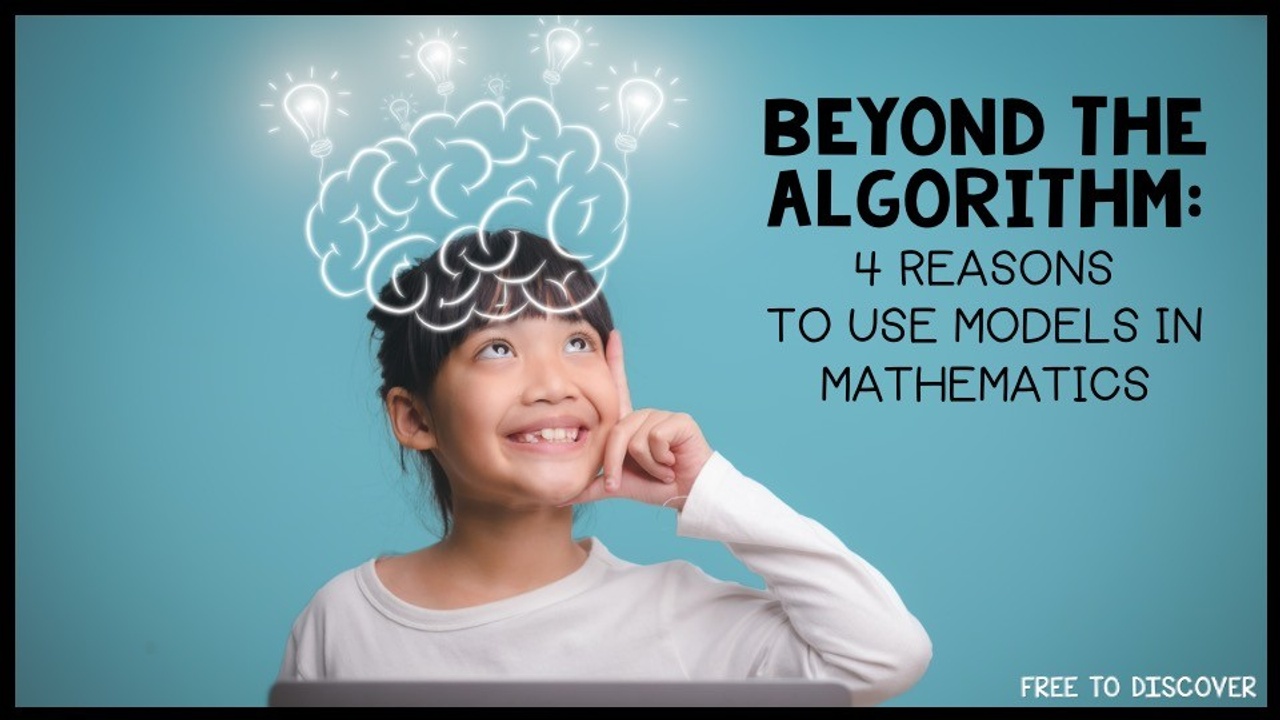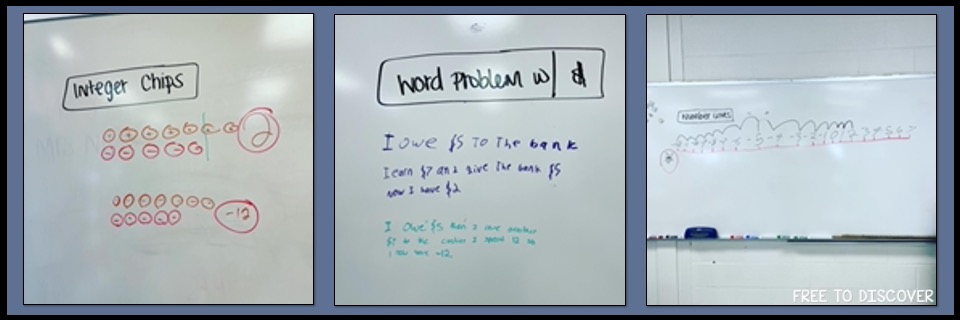
Beyond the Algorithm: 4 Reasons to Use Models in Mathematics
At the start of class, I almost always begin with an activator. I love using this specific warmup term because I remind students that its purpose it to activate their math brain. With that purpose in mind, I strive to move beyond algorithms and get students really thinking about the mathematics concepts. First, students spent a minute or so considering the difference between -5+7 and -5-7.
Next, students got to work in small groups. Each group was asked to use a different type of model to represent the two problems. I encouraged students to use integer chips, word problems involving money, or number lines.

In this post, I want to focus on why I take time at the beginning of class to move beyond the algorithm and ask students to use models. Continue reading for 4 reasons to use models in mathematics.
 Create a visual hook to build retention.
Create a visual hook to build retention.
Algorithms are great but they can only take students so far. It's vital that students develop conceptual understanding behind the rules and rote practice. Creating a visual hook for students to refer back to helps build longterm retention. When students have a visual image in their mind to associate with a concept, a mention of the image can aid in recall of the task students are asked to do. Thank you brain-based research!
 Provide students with opportunities to think.
Provide students with opportunities to think.
When you assign an activator (do now, problem of the day, warm up), do all of your students engage? Without lots of prompting, some students may sit back and wait until you have discussed the problem as a class. When you push students to do more than complete a problem, they will inevitably have to increase their level of engagement. Asking students to work collaboratively and draw models while I'm circulating the groups, questioning students, and pushing them to further add to their model gives students more time and opportunities to think.
 Offer different means for students to connect with the concepts.
Offer different means for students to connect with the concepts.
One model, strategy, or algorithm is not enough. Because all of our students' brains work so differently, it's important to show multiple means to solve a problem. It's a net positive for students to work through models that do not come naturally to them, but in the end, they may connect with one model or strategy more than the others. In the example with adding and subtracting integers, I asked my students to share which model they connected with most. Many preferred the integer counters, but each strategy was a preference for at least a couple of students.
 Engage students in higher order thinking.
Engage students in higher order thinking.
Let's normalize higher order thinking tasks for all students. Solving the problem using an algorithm lives at Bloom's level 1 (remember). However, when students draw models, they are working in Bloom's level 2 (understand). If students are asked to write a math equation from a model, there's Bloom's level 3 (apply). Comparing two methods, or - in this example - two operations, raises students to level 4 (analyze). Prompting students to determine an error in their group's work and fix it is level 5 (evaluate). Asking students to repeat the activity by making up their own integer task with associated model rounds up the 6th level (create).
We've touched on brain-based research, differentiation, and higher order thinking in one post! 🎶These are a few of my favorite things! 🎶
If you try this out, I'd love to hear from you!
Join the Free to Discover community!
When you subscribe, you'll access Issue 1 of our monthly newsletter for secondary math students!


